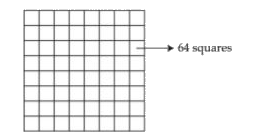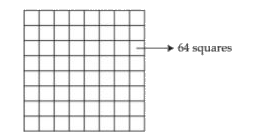Two unit squares are chosen at random on a chess board. The probability that they have a side in common is
A
19
B
27
C
118
D
13
Text Solution
The correct Answer is:C
|
Topper's Solved these Questions
- PROBABILITYBOOK - AAKASH SERIESCHAPTER - PROBABILITYEXERCISE - Exercise-II
130 Videos
- PROBABILITYBOOK - AAKASH SERIESCHAPTER - PROBABILITYEXERCISE - Practise Exercise
165 Videos
- PROBABILITYBOOK - AAKASH SERIESCHAPTER - PROBABILITYEXERCISE - Additional Exercise
29 Videos
- PERMUTATIONS & COMBINATIONSBOOK - AAKASH SERIESCHAPTER - PERMUTATIONS & COMBINATIONSEXERCISE - PRACTICE EXERCISE
163 Videos
- QUADRATIC EQUATIONS & EXPRESSIONSBOOK - AAKASH SERIESCHAPTER - QUADRATIC EQUATIONS & EXPRESSIONSEXERCISE - PRACTICE EXERCISE
88 Videos
Similar Questions
Knowledge Check
Two squares are chosen at random on a chessboard, the probability that they have a side in common is:
A332B132C1/18Dnone of theseTwo squares are chosen at random on a chessboard, the probability that they have a side in common is:
A332B132C1/18Dnone of theseTwo squares of 1×1 are chosen at random on a chestboard. What is the probability that they have a side in common ?
A1/18B64/4032C63/64D1/9
Two squares are chosen at random on a chessboard (see figure). The probability that they have a side in common is :

View SolutionTwo squares are chosen at random on a chessboard (see figure). The probability that they have a side in common is :

View SolutionIf 4 squares are chosen at random on a chess board, the probability that they lie on a diagonal line is
View SolutionTwo squares of 1×1 are chosen at random on a chestboard. What is the probability that they have a side in common ?
View SolutionOn a chess board if two squares are chosen at random, what is the probability that they haven't a side in common?
View Solution
